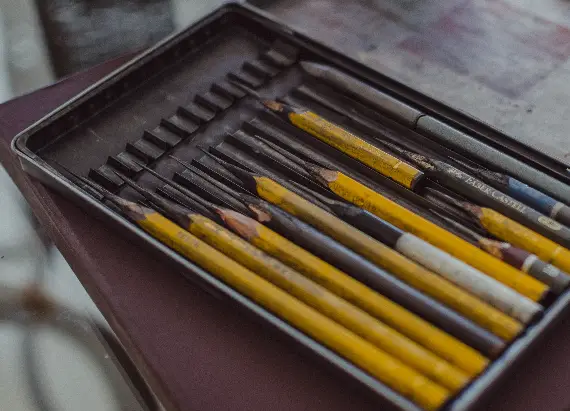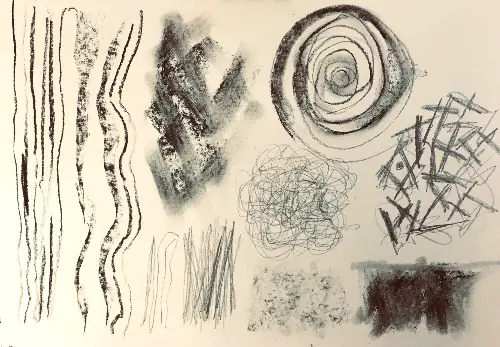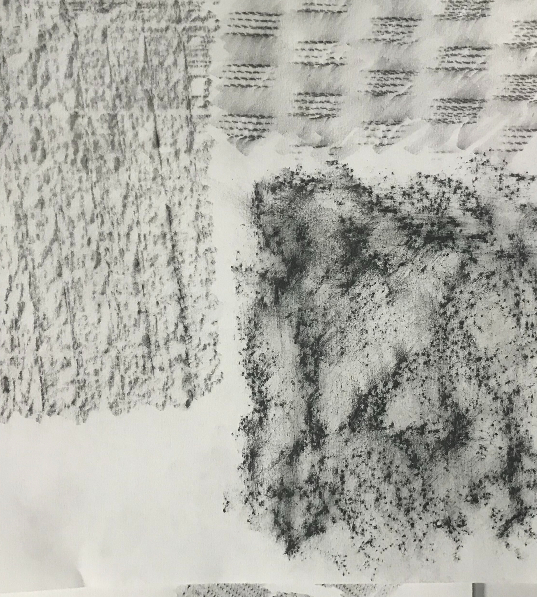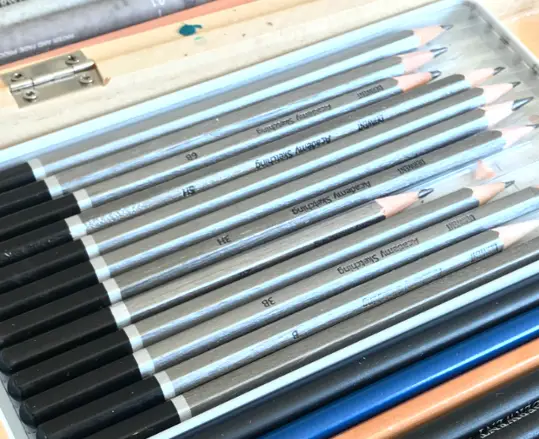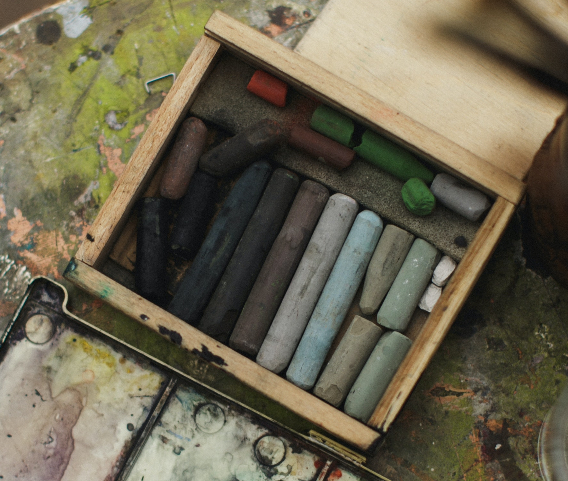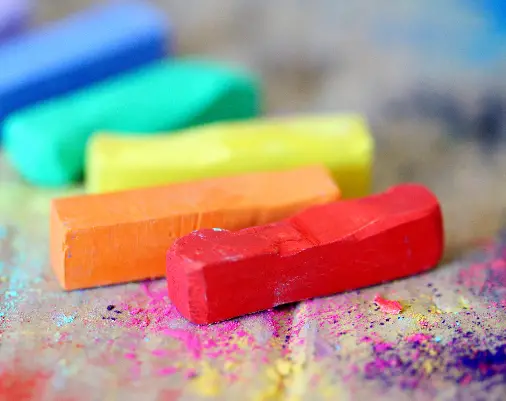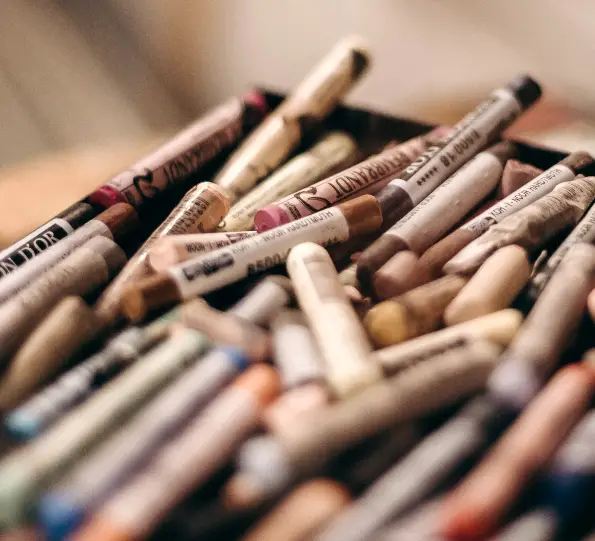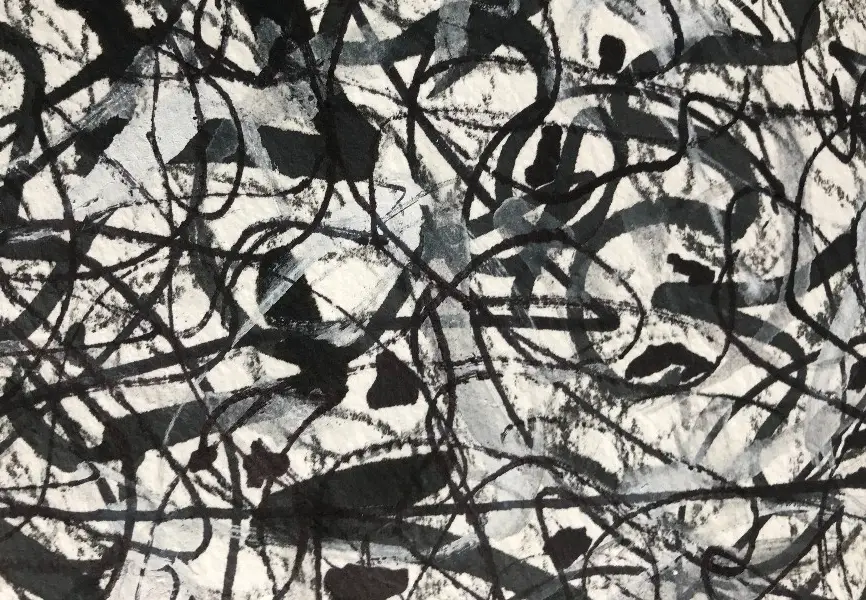Comparing Drawing Media
Drawing media can include wet and dry mediums used to put onto your paper with strengths and weaknesses. Find out the advantages of each. Plus the pitfalls of others that you don't know about when comparing drawing medium materials.
Comparing Liquid and Dry Drawing Media
You probably have heard that old saying comparing apples to oranges, but no matter how you slice it, they're both tree-bearing fruits. I'm saying this because drawing mediums are both from the same main branch of artistic materials. To be fair, for any emerging and beginner artist, you need to know what they can and cannot do.
Please look at this drawing and sketching video course I have created. Use this link.
Introducing Dry Art Mediums:
Just because it says it's dry isn't an immediate indicator that it's easier to use. All of these have blending ability to different degrees, while others will certainly need additives to keep them on your paper, including fixative spray.
Others in this category may need protection from smearing or smudging. I'll give you a good example of what you can expect with each of these concerning their positive and negative points.
Charcoal
Charcoal is one of the oldest and most faithful of all the drawing mediums throughout history. It was used to make cave drawings from the earliest anthropology accounts that prove that over 35,000 years ago, prehistoric man was tagging their crib with cave animal icons. Charcoal is indeed a universal carbon that is easy to transfer into drawing paper and blends very easily.
Because it doesn't have special binders to keep it from sticking to your paper, it's helpful to use a fixative spray. This allows it to bond onto paper for longer periods, yet after that, it's best to not disturb it.
Charcoal is great for giving you the truest black and offers a stark contrast on white paper. It's also a massive medium to convey polarized emotion within a world that is full of color.
Graphite
Until 1565, graphite was discovered in raw form and was highly effective for marking sheep in England. This natural material could be cut into thin slabs and used as a marker for many other tasks, which were eventually used by artists. As the result of a chemistry accident in 1895, Edward G. Acheson was the first to discover he could synthesize carborundum under intense heat to create graphite.
This material isn't as black as charcoal but can be formulated to create different hardness blends by combining clay and other materials.
Once again, graphite is easy to use and sticks to paper better than charcoal. It's also easy to blend using blending tools of all kinds. It's also easy to erase using gum paste and natural rubber erasers.
Pencils
Pencils are a new invention that was first born under a French military ruler who eventually went insane. A scientist who served in the army for Napoleon Bonaparte in 1795 was the first to invent the modern pencil. Nicholas-Jacques Conte devised a way to mix clay and graphite in a kiln and bonding it between two pieces of wood.
The rest is history, but the whole point of a pencil was not to be rounded at all. It would otherwise roll off a table.
So the earliest pencils were rectangular-shaped, just like the ones you see for engineers and carpenters. Pencils are handy, so you don't get graphite on your fingers, and they do need to be sharpened often, so you get a fine point to work with just like any other graphite material.
Pencils are handy when they come in a complete set to give you various hardness levels.
Pastels
Pastel colors were invented by combining pigments with binders to create a dry chalk-like medium used to draw on paper or canvas. They were very popular in the 15th century and were among the first mentioned and used by Leonardo da Vinci. Just like every other great artist, Leonardo heard about pastels from another buddy Jean Perréal, who learned about them when he was in Milan.
Pastels aren't just Easter or cotton candy colors but include various intense colors that spread very easily and blend just like chalk.
This also needs to have a fixative spray; otherwise, it will smudge. This keeps the pastel from rubbing off or flaking onto other paper if it gets knocked around or rubs on other artwork when you stacked pages on each other.
Chalk
This is a naturally occurring rock similar to limestone but mainly has a majority of the mineral calcite made from leftover marine creatures.
It's a very soft material that's perfect for using as a drawing medium, although it comes off just as easy if you rub it too hard. This is why chalk will stick to paper after a sealer is applied. There are many different formulations of colored chalk that appear more like soft pastels.
Since chalk is so dense, it will always appear wispy and dreamy no matter how much pigment you put in it. Not until you start using pastels do you get deeper color saturation and more vibrant colors that pop. Many artists confuse chalk with pastels since the word pastel has become such a wishy-washy color sensation.
Oil Pastels
What happens when you mix a higher concentration of oil binders with color pigment? You have all the better chances of a medium that will stick better to your paper surface. Oil pastels are one step higher than your average kid's greasepaint pencil.
Grease pencils are indeed great for sporting event face paints and clown makeup, but when the heavily powdered pigment is added, it's perfect for canvas and paper.
You can still add a fixative, but you need to be careful of smudging when it comes to blending. Oils pastels are not so easy to remove from your paper, and you'll end up having to layer over your mistakes to hide smudged spots. Unlike crayons, oil pastels are better for layering due to their high pigment content.
Paper
Sooner or later, there will be that ‘gotcha' moment that will have you scratching your head. Yes, indeed, paper is very much a dry drawing medium. Paper is dry and highly absorbent for soaking up oil, ink, paint, and all other art mediums you put on it. The final piece of artwork you create is displayed on paper of all sizes and shapes.
Don't let the global activists scare you about the lack of enough trees to make paper; it can be recycled.
According to recent information, this is why all the paper you see being milled these days is recycled by two-thirds.
Most people don't realize that modern paper is improved by using additives that make the paper stronger and more stable than the methods used centuries ago. Thankfully, cellulose and other paper substitutes or additives give artists more beneficial paper use when creating art.
Pen and Ink
Ink has been around as long as the ancient Egyptians, yet the story often gives credit to the Chinese who also want to claim they gave the recipe to India. The point is that ink is a very old medium used by artists to draw pictures using various colored inks and styles of pens that provide fine detail.
Many pens give you more freedom to create thick or thin lines, but once ink goes onto paper, it might as well be set in stone.
The paper absorbs ink and is not easy to remove, if impossible to fix if you make a mistake. This is why you need to sketch your lines with a pencil beforehand to get the shape you need with fewer mistakes.
Recent Posts:
- Pen and Ink with Watercolor Wash Techniques
- How To Add Color To A Graphite Drawing
- Are Your Drawings Not Improving? Here’s How to Get Better
- How to Draw with Charcoal on Canvas.
Liquid Drawing Mediums
Other artist mediums include paints intended to fill in detail or are the detail put onto your paper or canvas. You'll find that some are more water-based, while some need stronger thinners such as solvents to get lighter and adjustable shades.
Unlike the dry mediums, you need to have a steady hand and attention to where these wet mediums are going.
Acrylic Paints
The good thing about acrylic paint is that it's a medium viscosity and can be thinned as you need to be. It can also lose water if it sits around too long and needs to be shaken to get the paint to be paintable. You can also add a little bit of water if it dried out over time.
Acrylic paint can be layered after it dries, allowing you to build up colors you can't get with most wet mediums.
While acrylic is still wet, you have a short window to mix and create shades for added detail while you paint. Not as long as oil paint, but much longer than watercolor will allow.
Acrylic paint doesn't need to be sealed unless you want to have a shiny finish. Acrylic paint is best applied with a paintbrush using different techniques to apply to your paper.
Inking
Painting and drawing with inks is a haphazard practice that you need to be careful with. Using too much ink will flood your paper, so the best way to go is to use only what you need to cover sections that will absorb into your paper.
Ink also dries at different degrees depending on the thickness of your paper. Plus the type of paper that you use. On cardstock, the ink will take longer to dry unless you're using thin layers.
Many artist pens have artist ink that is applied with a brush tip or from a felt tip. As the ink is soaked into your paper, it can bleed over a line if you aren't watchful.
This is why many ink painters will add no more than 1/16″ from the edge of their borderline, allowing ink to gradually soak into the paper right up to the contour line.
Watercolor
You will need to use very absorbent paper for watercolor to work for you. It needs to be watercolor paper and will have a different weight than standard artist paper.
This paper will be nearly as thick as a decent business card, so you don't get buckling or warping. Watercolor can also be blended and mixed while you paint, and to some extent, you can create excellent grading in spots where you want the color to fade away.
If you carefully mix your watercolor, you can add accent colors on top of your painting if the colors are thick enough to act like acrylic.
Using a fine line brush, the watercolors won't soak into your details easily and give you professional finishing results. Dried spots can also be reactivated to create textured and washed-out details.
Oil Paints
The best part about oil paint is the amount of time you can work with it before it dries. Many artists like using a canvas, but it's not uncommon to use thick paper if you prefer a very smooth surface to start with.
The only downside to oil paint is that it needs a thinner that is smelly for most people. You can thin oil paints with linseed oil which is fine, but to clean your brushes, you need to use thinner turpentine.
This is what most oil paint studios smell like when you enter the room, and it can be off-putting. Don't forget that anything you thin your oil paints with, whether it's linseed oil, safflower oil, or Liquin, will take longer to dry.
It's nice to have a painting medium that gives you more ability to blend, but it's annoying that it takes forever to dry if you're in a hurry.
Mixed Media Drawing and the Effects You Can Archive
What magician doesn't have more than a few tricks up their sleeve when they want to astound and baffle their audience? The secrets they develop and the tricks they use to create painting effects will all vary for many artists.
When the Swiss surrealist H.R. Giger first unveiled his airbrush drawings primarily made from Indian ink and various colored inks for highlights, art critics were stocked at the dimensional quality.
It's all about using these mediums to your advantage to get layered and multiple levels of shades to look more appealing.
How you create these effects is also a matter of experimentation. Learning how they work and devoting time to refining your style also gives your artwork more creditability.
Line and Wash
Nobody ever looked at a Picasso painting and thought anything else but genius. I feel his earlier style learned from the Old Masters reflects a character in his painting ability that totally missed the train.
The use of lines and washes are two opposing forces that define the realism line you want to breach. Hard lines in paintings appear as if they come from a photograph, while highlights are masterful observations of where incoming light is hitting your subjects.
What ties everything together are the washes of color that marry everything together in a seamless effect. It tricks your eye into thinking that you're not looking at paint on a surface, but living flesh, woven fabric, wooden or glass surfaces, and so on.
The more you trick your senses into believing what you see in a picture is proof your ability to create art.
Collage
This is almost considered a joke in today's art from the past abuses that came from the New York City art pop world that was destroyed in the early 1950s and 1960s.
Art Pop is synonymous with collage painting and vice versa. But to get a real appreciation of collage painting, Georges Seurat developed his own version of collage painting called Pointillism.
It stands out so obvious that everything in his paintings is virtually made up of nothing but carefully placed dots. If you look at a traditional college, it's the same concept as any other kind of collage format.
Several pieces of colors and selected shades were placed together onto paper to create a picture. Here's a modern collage from Andy Warhol in the early 80s.
Now compare this to what the word collage means, and you'll start to see how transparent and money-centered Warhol really was. Any first-year art student (if you didn't tell them who did this right away) would think this was a joke!
The point is, if you are going to create a collage, it better be from scratch, and it should have some substance. Here's an excellent example of what a masterful collage looks like these days.
Mixing old and new techniques with collage methods is an act that paves the way for inspiration. Not repeating the same rinse and repeat methods that everyone else heard over and over.
Don't be afraid to express yourself with emotion combining drawing mediums and layering your colors. If you really want to spend time comparing drawing medium materials, make a complete set of the same picture in each medium to see these differences.
Create Art With My Favourite Drawing Resources
General Drawing Courses. I like Udemy if you want to develop your knowledge of drawing techniques. Udemy is an excellent choice due to its wide range of creative courses and excellent refund policy. They often have monthly discounts for new customers, which you can check here. Use my link.
Sketching and Collage. Take a look at this sketching resource I have created. Use this link.
Proko. Is one of my favorite teachers who surpasses in the teaching of Anatomy and Figure drawing. Prokos course breaks down the drawing of the human body into easy-to-follow components aiding the beginner to make rapid progress. For this, I really like Proko.
Art Easels. One of my favorite ways to draw is by using a drawing easel, which develops the skill of drawing on a vertical surface. The H frame easel is an excellent vertical way to add variety to the style and type of marks you create when using a drawing board.
To see all of my most up-to-date recommendations, check out this resource I made for you.

